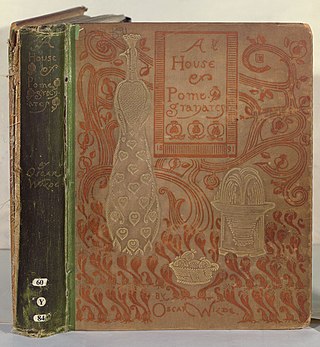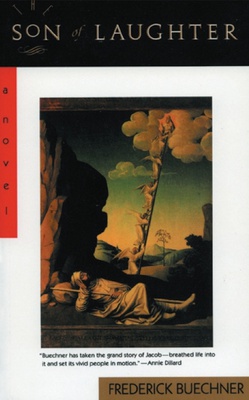
The Great Divorce is a novel by the British author C. S. Lewis, published in 1945, based on a theological dream vision of his in which he reflects on the Christian conceptions of Heaven and Hell.

John Bunyan was an English writer and Puritan preacher. He is best remembered as the author of the Christian allegory The Pilgrim's Progress, which also became an influential literary model. In addition to The Pilgrim's Progress, Bunyan wrote nearly sixty titles, many of them expanded sermons.

The Pilgrim's Progress from This World, to That Which Is to Come is a 1678 Christian allegory written by John Bunyan. It is regarded as one of the most significant works of theological fiction in English literature and a progenitor of the narrative aspect of Christian media. It has been translated into more than 200 languages and has never been out of print. It appeared in Dutch in 1681, in German in 1703 and in Swedish in 1727. The first North American edition was issued in 1681. It has also been cited as the first novel written in English. According to literary editor Robert McCrum, "there's no book in English, apart from the Bible, to equal Bunyan's masterpiece for the range of its readership, or its influence on writers as diverse as William Hogarth, C. S. Lewis, Nathaniel Hawthorne, Herman Melville, Charles Dickens, Louisa May Alcott, George Bernard Shaw, William Thackeray, Charlotte Bronte, Mark Twain, John Steinbeck and Enid Blyton." The words on which the hymn "To be a Pilgrim" is based come from the novel.

The Shepherd of Hermas, sometimes just called The Shepherd, is a Christian literary work of the late first half of the second century, considered a valuable book by many Christians, and considered canonical scripture by some of the early Church fathers such as Irenaeus. The Shepherd was popular amongst Christians in the 2nd, 3rd, and 4th centuries. It is found in the Codex Sinaiticus. The Muratorian Fragment identifies the author of The Shepherd as Hermas, the brother of Pius I.

Godric is the tenth novel by the American author and theologian, Frederick Buechner. Set in the eleventh and twelfth centuries, the novel tells the semi-fictionalised life story of the medieval Roman Catholic saint, Godric of Finchale. It was first published in 1980 by Atheneum, New York, and was a finalist for the 1981 Pulitzer Prize.

Watchman Nee, Ni Tuosheng, or Nee T'o-sheng, was a Chinese church leader and Christian teacher who worked in China during the 20th century. His evangelism was influenced by the Plymouth Brethren.

A House of Pomegranates is a collection of fairy tales written by Oscar Wilde published in 1891 as a second collection for The Happy Prince and Other Tales (1888). Wilde once said that this collection was "intended neither for the British child nor the British public."
Hannah Hurnard (1905–1990) was a 20th-century Christian author, best known for her allegorical novel, Hinds' Feet on High Places.

"Footprints," also known as "Footprints in the Sand," is a popular modern allegorical Christian poem. It describes a person who sees two pairs of footprints in the sand, one of which belonged to God and another to themselves. At some points the two pairs of footprints dwindle to one; it is explained that this is where God carried the protagonist.
In the creation and criticism of fictional works, a character flaw or heroic flaw is a bias, limitation, imperfection, problem, personality disorder, vice, phobia, prejudice, or deficiency present in a character who may be otherwise very functional. The flaw can be a problem that directly affects the character's actions and abilities, such as a violent temper. Alternatively, it can be a simple foible or personality defect, which affects the character's motives and social interactions, but little else.

Much Afraid is the second studio album by American Christian rock band Jars of Clay. It was released in 1997 by Essential Records. Following the charting success of the band's debut album, Much Afraid was moderately successful, but was unable to achieve the level of its predecessor.

Saint Blandina was a Christian martyr who died in Lugdunum during the reign of Emperor Marcus Aurelius.

Robert Holmes Bell Jr. is an American author, speaker, playwright, musician and former pastor. Bell founded Mars Hill Bible Church in Grandville, Michigan, and pastored it until 2012. Under his leadership, Mars Hill was one of the fastest-growing churches in America.

Christian literature is the literary aspect of Christian media, and it constitutes a huge body of extremely varied writing.
The concept of a victim soul is an unofficial belief derived from interpretations of the Catholic Church teachings on redemptive suffering. A person believes themselves or is considered by others to be chosen by God to suffer more than most, accepting this condition based on the example of Christ's own Passion. Neither the Catholic Church, nor any other Christian denomination, officially designates anyone as a victim soul. As it is not considered dogma, the Church classifies belief in victim souls as a matter of private revelation and thus not obligatory for members to subscribe to.
The Encyclopedia of Pleasure or Jawāmiʿ al-Ladhdhah is the earliest existent Arabic erotic work, written in the 10th century by the medieval Arab writer Ali ibn Nasr al-Katib.

Affective piety is most commonly described as a style of highly emotional devotion to the humanity of Jesus, particularly in his infancy and his death, and to the joys and sorrows of the Virgin Mary. It was a major influence on many varieties of devotional literature in late-medieval Europe, both in Latin and in the vernaculars. This practice of prayer, reading, and meditation was often cultivated through visualization and concentration on vivid images of scenes from the Bible, Saints' Lives, Virgin Mary, Christ and religious symbols, feeling from the result. These images could be either conjured up in people's minds when they read or heard poetry and other pieces of religious literature, or they could gaze on manuscript illuminations and other pieces of art as they prayed and meditated on the scenes depicted. In either case, this style of affective meditation asked the "viewer" to engage with the scene as if she or he were physically present and to stir up feelings of love, fear, grief, and/or repentance for sin.
Affective meditation is a Christian spiritual practice originating in Medieval Europe by which a pilgrim, worshipper, or other follower of Christ seeks to imagine the sights, sounds, tastes, smells, movement, and tactility of specific scenes from canonical Gospels and their characters, with particular emphasis on empathising with the compassion and suffering of Jesus and the joys and sorrows of the Virgin Mary, leading to the authentic and spontaneous expression of emotion.

The Son of Laughter is the twelfth novel by the American author and theologian, Frederick Buechner. The novel was first published in 1993 by Harper, San Francisco. In the same year it was named ‘Book of the Year’ by the Conference on Christianity and Literature.

Three Discourses at the Communion on Fridays is a book of religious discourses written by Søren Kierkegaard.















